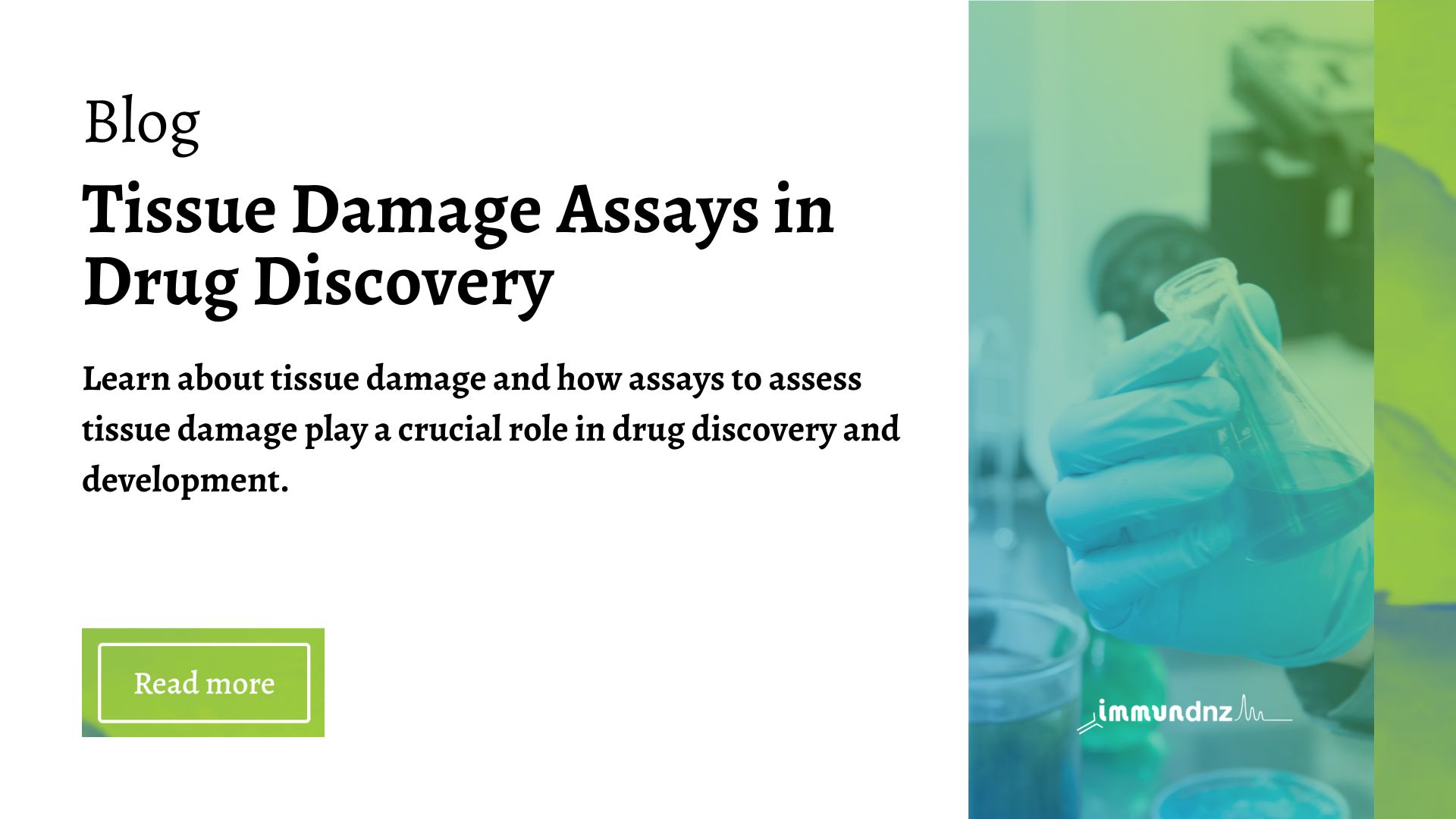Tissue damage assays play a crucial role in drug discovery and development by enabling researchers to assess the effects of potential therapeutic agents on tissue integrity, repair mechanisms, and pathological processes. These assays provide valuable insights into the mechanisms of tissue injury and regeneration, facilitating the identification of novel drug targets and the evaluation of therapeutic interventions for a wide range of diseases and conditions. Here we will explore the significance of tissue damage assays in drug discovery, their applications, challenges, and recent advancements in this field.
Understanding Tissue Damage
Tissue damage encompasses a broad spectrum of pathological processes, ranging from acute injuries, such as trauma and ischemia-reperfusion injury, to chronic conditions, such as inflammatory diseases, fibrosis, and cancer. Regardless of the underlying cause, tissue damage triggers a cascade of cellular and molecular events, including inflammation, cell death, tissue remodeling, and repair responses.
The ability to accurately model and quantify tissue damage in vitro and in vivo is essential for understanding the pathophysiology of various diseases and for evaluating the efficacy and safety of potential therapeutic interventions. Tissue damage assays enable researchers to mimic and monitor these complex processes under controlled conditions, providing valuable insights into disease mechanisms and therapeutic targets.
Tissue Damage Assays in Drug Discovery
Tissue damage assays encompass a diverse array of experimental techniques and model systems designed to assess different aspects of tissue injury, repair, and regeneration. These assays can be employed at various stages of the drug discovery pipeline, from target identification and validation to preclinical and clinical evaluation.
One of the primary applications of tissue damage assays is in the screening of potential therapeutic agents for their ability to mitigate tissue injury and promote repair. Small molecules, biologics, and cell-based therapies targeting key pathways involved in tissue damage and repair can be evaluated using in vitro and ex vivo models of tissue injury. For example, compounds that modulate inflammation, oxidative stress, or apoptosis may show promise in reducing tissue damage and improving outcomes in conditions such as stroke, myocardial infarction, or organ transplantation.
Furthermore, tissue damage assays are instrumental in the development of regenerative medicine therapies aimed at restoring tissue structure and function. Stem cell-based approaches, tissue engineering strategies, and biomaterials can be evaluated using tissue damage assays to assess their ability to promote cell survival, tissue integration, and functional recovery. For instance, scaffolds containing growth factors or extracellular matrix components may enhance tissue regeneration in bone, cartilage, or nerve injuries.
Moreover, tissue damage assays play a crucial role in the evaluation of potential side effects and toxicity associated with drug candidates. Hepatotoxicity, nephrotoxicity, cardiotoxicity, and other organ-specific adverse effects can be assessed using in vitro models of tissue damage, such as hepatocyte cultures, renal tubule assays, or cardiomyocyte function assays. By identifying and mitigating off-target effects early in the drug development process, tissue damage assays contribute to the development of safer and more effective therapeutics.
Challenges and Advancements
Despite their utility, tissue damage assays present several challenges that must be addressed to enhance their reliability and relevance in drug discovery. One challenge is the complexity of tissue physiology and the dynamic nature of tissue injury and repair processes. Modeling these processes accurately in vitro requires the use of physiologically relevant cell types, culture conditions, and biomimetic scaffolds.
Another challenge is the reproducibility and translatability of tissue damage assays across different experimental systems and disease models. Standardization of experimental protocols, endpoints, and data analysis methods is essential to ensure consistency and comparability between studies. Additionally, the development of robust biomarkers and imaging techniques for quantifying tissue damage and repair in vivo can facilitate the validation and translation of preclinical findings to clinical settings.
Advancements in tissue engineering, microfluidics, and organ-on-a-chip technologies have revolutionized tissue damage assays by enabling more accurate modeling of tissue injury and repair processes in vitro. These platforms allow for the integration of multiple cell types, dynamic culture conditions, and real-time monitoring of tissue responses, mimicking the complexity of native tissue microenvironments more closely.
Furthermore, the integration of computational modeling and artificial intelligence algorithms holds the potential to accelerate drug discovery by predicting the effects of candidate compounds on tissue damage and repair processes. By leveraging large-scale omics data, mechanistic models, and machine learning algorithms, researchers can identify molecular signatures associated with tissue injury or regeneration, facilitating the identification of novel drug targets and biomarkers.
Conclusion
Tissue damage assays represent indispensable tools in drug discovery, offering insights into the mechanisms of tissue injury, repair, and regeneration. By elucidating the complex interactions between cells, extracellular matrix, and soluble factors in the context of tissue microenvironments, these assays enable researchers to identify novel drug targets, evaluate therapeutic interventions, and develop regenerative medicine therapies for a wide range of diseases and conditions. Despite challenges such as complexity and reproducibility, ongoing advancements in technology and computational modeling hold the promise of overcoming these obstacles and unlocking new opportunities for leveraging tissue damage assays in the quest for safer and more effective therapeutics.


